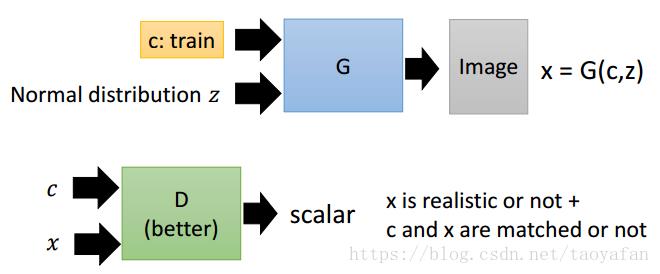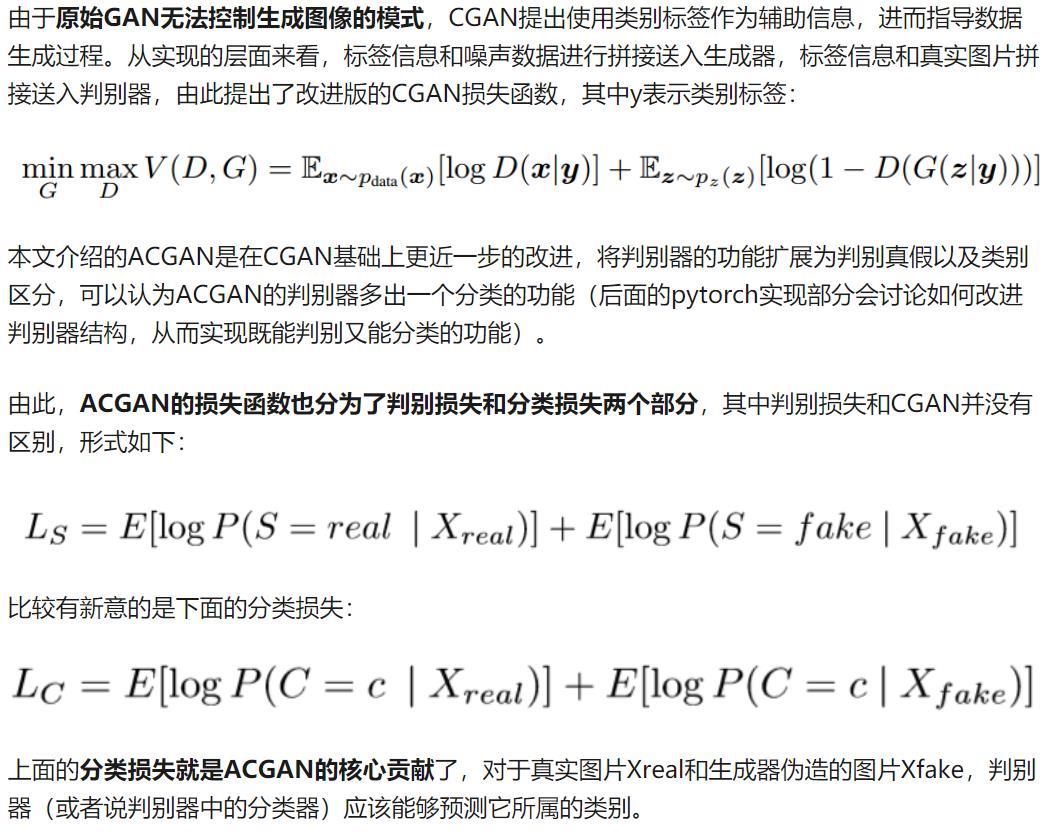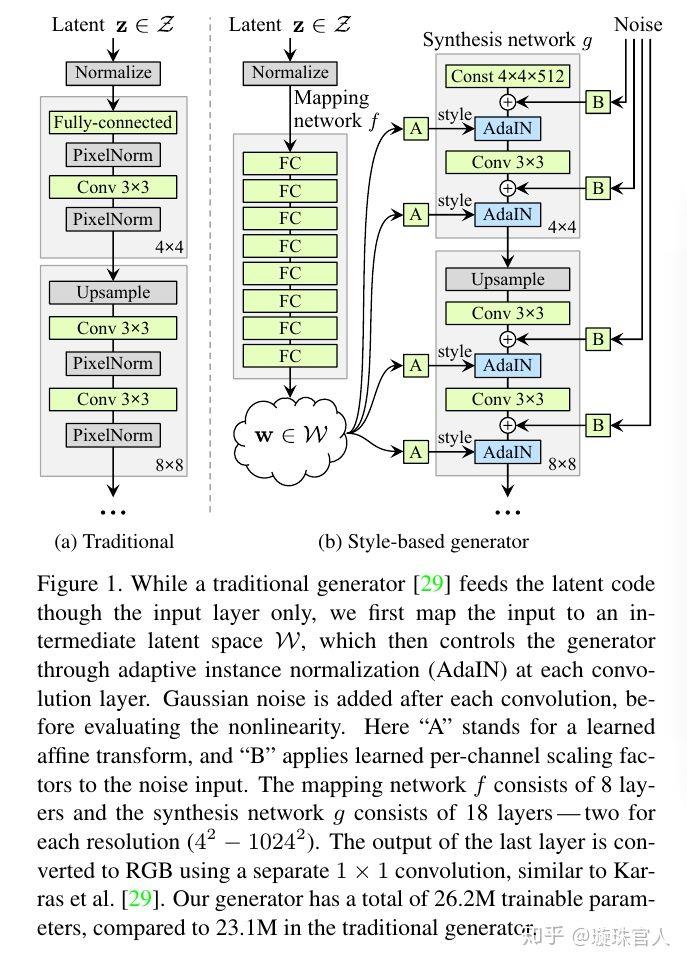A Review on Generative Adversarial Networks: Algorithms, Theory, and Applications
Posted 穷酸秀才大艹包
tags:
篇首语:本文由小常识网(cha138.com)小编为大家整理,主要介绍了A Review on Generative Adversarial Networks: Algorithms, Theory, and Applications相关的知识,希望对你有一定的参考价值。

1 Introduction
GANs由两个模型组成:生成器和鉴别器。生成器试图捕获真实示例的分布,以便生成新的数据样本。鉴别器通常是一个二值分类器,尽可能准确地将生成样本与真实样本区分开来。GANs的优化问题是一个极大极小优化问题。优化终止于相对于生成器的最小值和相对于鉴别器的最大值的鞍点。
2.1 Generative algorithms
生成算法可分为两类:显式密度模型和隐式密度模型。
2.1,1 Explicit density model
显式密度模型假设分布,利用真实数据训练包含分布或拟合分布参数的模型。完成后,使用所学习的模型或分布生成新的示例。
2.1.2 Implicit density model
隐式密度模型不能直接估计或拟合数据分布。它在没有明确假设[101]的情况下从分布中生成数据实例,并利用生成的实例修改模型。GANs属于有向隐式密度模型范畴。
3 Algorithm
3.1 Generative Adversarial Nets (GANs)
3.1.1.1 Original minimax game:

3.2 GANs\' representative variants
3.2.1 InfoGAN
https://zhuanlan.zhihu.com/p/55945164

从损失函数的角度来看,infoGAN的损失函数变为:
3.2.2 Conditional GANs (cGANs)
https://blog.csdn.net/taoyafan/article/details/81229466
Conditional GAN的目标函数:

Conditional GAN 结构图:

判别网络两种形式:
ACGAN (Auxiliary Classifier GANs):
https://zhuanlan.zhihu.com/p/91592775

3.2.3 CycleGAN
https://www.jianshu.com/p/5bf937a0d993
3.3.3.6 BigGANs and StyleGAN:
StyleGAN:
https://zhuanlan.zhihu.com/p/62119852

以上是关于A Review on Generative Adversarial Networks: Algorithms, Theory, and Applications的主要内容,如果未能解决你的问题,请参考以下文章